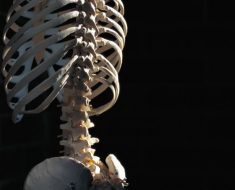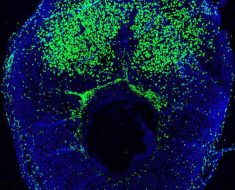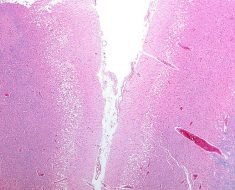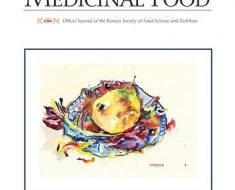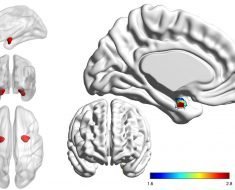Researchers have developed a way to grow human platelets in the laboratory from stem cells derived from fat tissue. The achievement, reported today in the journal Blood, suggests manufactured platelets could eventually reduce the reliance on donated platelets to help patients with cancer and other disorders.
Platelets are a component of blood that helps with clotting. Platelet transfusions can be life-saving for patients dealing with cancer or the effects of chemotherapy, infections, immune disorders, or platelet disorders.
Over 4.5 million platelet units of plasma are transfused every year worldwide, a need that currently must be met by human donors. Because donated platelets have a shelf life of less than a week, supplies often fall short of patient needs. In addition, donated platelets are subject to inherent safety risks due to infection from the donor and immune response in the recipient.
In the new study, researchers led by Yumiko Matsubara, Ph.D., of Keio University School of Medicine in Tokyo, Japan, built on previous efforts to prove that fat (adipose) tissue could be used to create a stem cell line that yielded functioning platelets in just 12 days.
“By removing the donor from the equation, adipose-derived stem cells could be used to provide a ready supply of safe, tolerable platelets to meet an ever-changing demand,” said Dr. Mastubara.”
Researchers initially sought to derive platelets from two other types of stem cells including one known as induced pluripotent stem cells (iPS). They noticed adipose-derived cells, which were being used as a negative control in the experiments, had produced megakaryocyte- and platelet-sized cells that naturally expressed several genes important to producing platelets.
After refining methods for coaxing adipose-derived stem cells to produce platelets, the researchers conducted a series of tests to determine whether the manufactured platelets would function similarly to natural human platelets. They verified that the lab-grown platelets contained hallmark proteins found on the surface of natural platelets, as well as granules that are key to the clotting process. Blood clotting simulations and experiments using mice confirmed that the platelets behave like donated platelets, gathering together into clumps to form clots.
Source: Read Full Article

